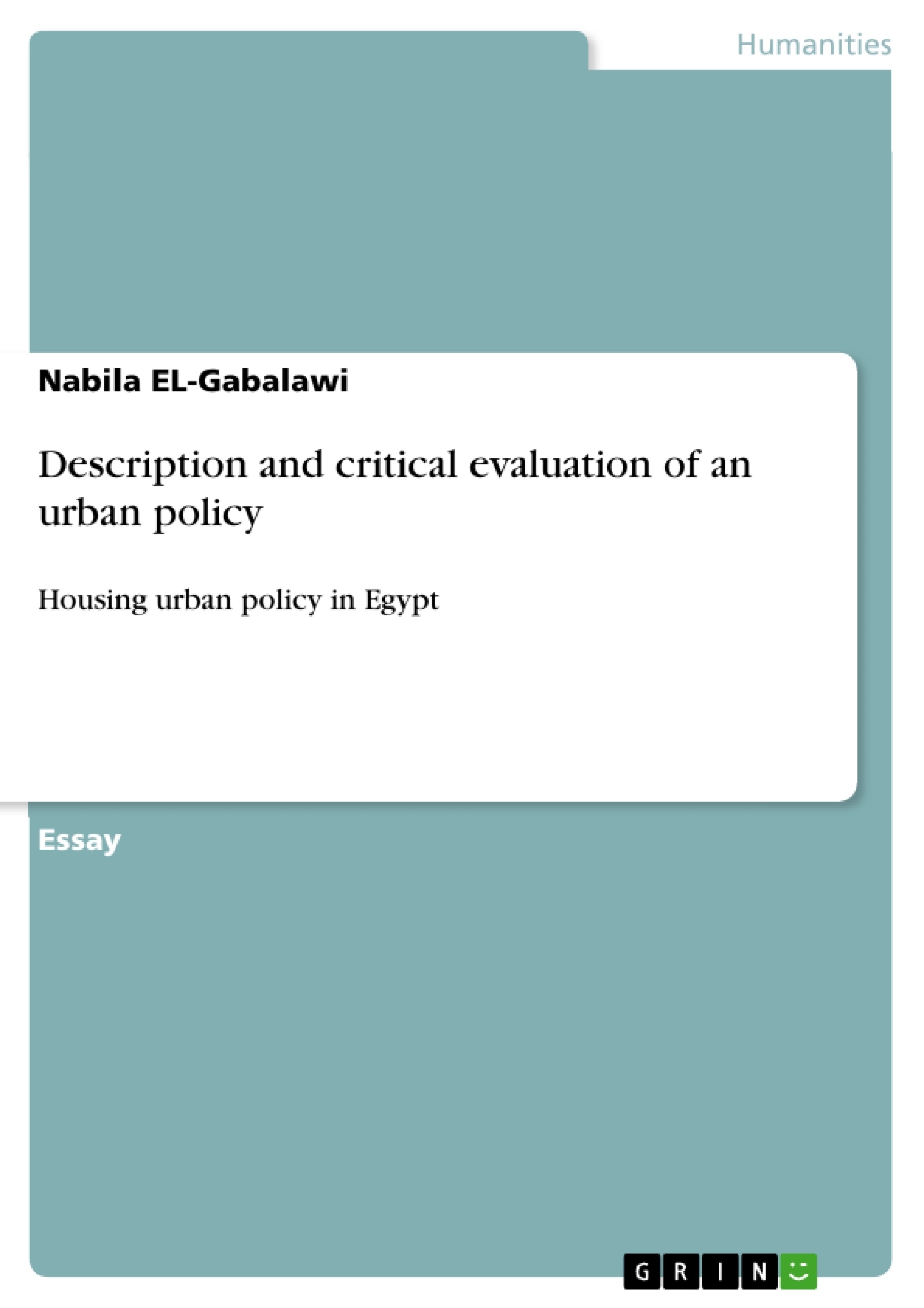Setting up a policy to fill in a certain gap is not an easy task and to develop a policy for addressing the housing problems especially for the poor is the most difficult one. This assumption aroused from the fact that any housing policy does not relate to housing by itself only but also associated with addressing the socio-economic changes that created unbalanced wealth distribution among the different categories within the country.
In Egypt the problem of housing provision for low-income groups is really challenging because of the uncontrolled population and urban growth. The Egyptian Government has the good intention to respond to the needs of the poor, as the Government announced through its National Housing Project to “provide a shelter for every citizen” for that purpose it has initiated different housing schemes to solve the problem of housing provision all over Egypt especially for youth and low-income groups, but when it comes to reality, this target seems to be far ahead to be achieved.
On the other hand, some of the latest Government trials proved to be successful as it managed to provide large number of beneficiaries with a healthy shelter, with affordable price that matches with their actual needs.
In order to make the Egyptian housing policy for the poor more effective, different legislative and regulatory complications should be tackled and more participatory approaches should be adopted in order to understand what are the actual needs of the poor, and hence to be more responsive to them.
Inhaltsverzeichnis (Table of Contents)
- Introduction
- Background
- Addressing the housing problem: -
- The main features of the Housing Policies in Egypt: -
Zielsetzung und Themenschwerpunkte (Objectives and Key Themes)
This paper examines the urban housing policy of Egypt, analyzing the government's interventions and their effectiveness in addressing the housing needs of the poor. The paper includes a comparison of successful and failed models of low-income housing.
- The housing challenges faced by low-income groups in urban Egypt
- The role of government interventions in housing provision
- An evaluation of the success and failure of different housing models
- The impact of socio-economic changes and population growth on housing provision
- The need for comprehensive and sustainable housing policies that address diverse human needs
Zusammenfassung der Kapitel (Chapter Summaries)
- Introduction: This section introduces the topic of urban housing policy in Egypt, highlighting its significance and focusing on the housing needs of the poor. It also outlines the scope and objectives of the paper.
- Background: This chapter explores the drivers of housing challenges in Egypt, including socioeconomic changes, population growth, and the concentration of population in specific areas. It emphasizes the importance of shelter as a basic human need and the essential factors for fulfilling these needs.
- Addressing the housing problem: -: This chapter reviews the major government policies implemented to address the housing shortage in Egypt over the last decade. It discusses the National Housing Project, its objectives, and the mechanisms for providing affordable housing units. It also highlights the government's National Action Plan, emphasizing its focus on providing sufficient housing for all segments of society, particularly low-income groups.
Schlüsselwörter (Keywords)
Urban housing policy, Egypt, low-income housing, government interventions, housing provision, socio-economic changes, population growth, informal settlements, New Towns, National Housing Project, National Action Plan.
- Citation du texte
- Nabila EL-Gabalawi (Auteur), 2008, Description and critical evaluation of an urban policy, Munich, GRIN Verlag, https://www.grin.com/document/156538



